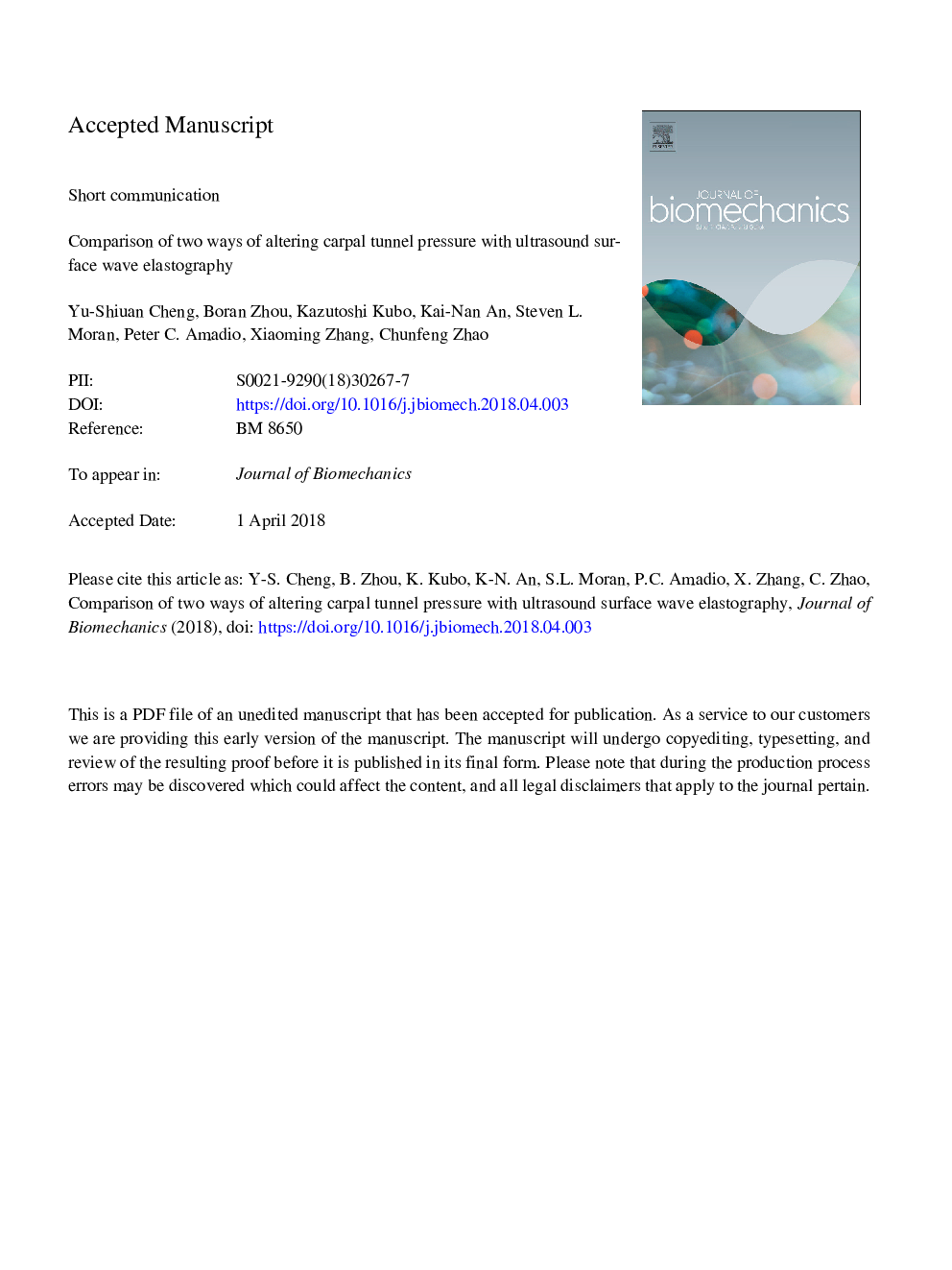| Article ID | Journal | Published Year | Pages | File Type |
|---|---|---|---|---|
| 7236040 | Journal of Biomechanics | 2018 | 24 Pages |
Abstract
Higher carpal tunnel pressure is related to the development of carpal tunnel syndrome. Currently, the measurement of carpal tunnel pressure is invasive and therefore, a noninvasive technique is needed. We previously demonstrated that speed of wave propagation through a tendon in the carpal tunnel measured by ultrasound elastography could be used as an indicator of carpal tunnel pressure in a cadaveric model, in which a balloon had to be inserted into the carpal tunnel to adjust the carpal tunnel pressure. However, the method for adjusting the carpal tunnel pressure in the cadaveric model is not applicable for the in vivo model. The objective of this study was to utilize a different technique to adjust carpal tunnel pressure via pressing the palm and to validate it with ultrasound surface wave elastography in a human cadaveric model. The outcome was also compared with a previous balloon insertion technique. Results showed that wave speed of intra-carpal tunnel tendon and the ratio of wave speed of intra-and outer-carpal tunnel tendons increased linearly with carpal tunnel pressure. Moreover, wave speed of intra carpal tunnel tendon via both ways of altering carpal tunnel pressure showed similar results with high correlation. Therefore, it was concluded that the technique of pressing the palm can be used to adjust carpal tunnel pressure, and pressure changes can be detected via ultrasound surface wave elastography in an ex vivo model. Future studies will utilize this technique in vivo to validate the usefulness of ultrasound surface wave elastography for measuring carpal tunnel pressure.
Related Topics
Physical Sciences and Engineering
Engineering
Biomedical Engineering
Authors
Yu-Shiuan Cheng, Boran Zhou, Kazutoshi Kubo, Kai-Nan An, Steven L. Moran, Peter C. Amadio, Xiaoming Zhang, Chunfeng Zhao,
